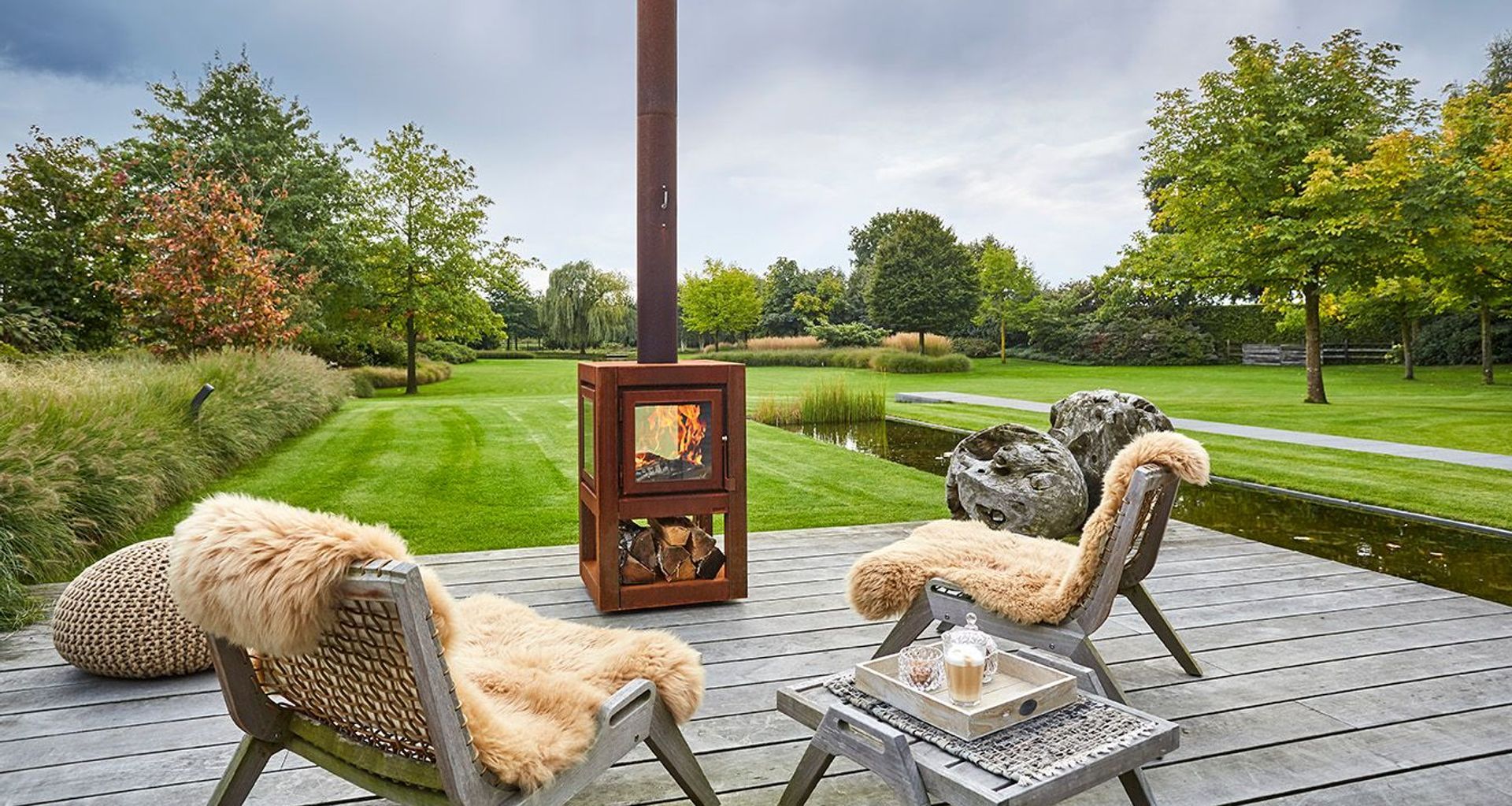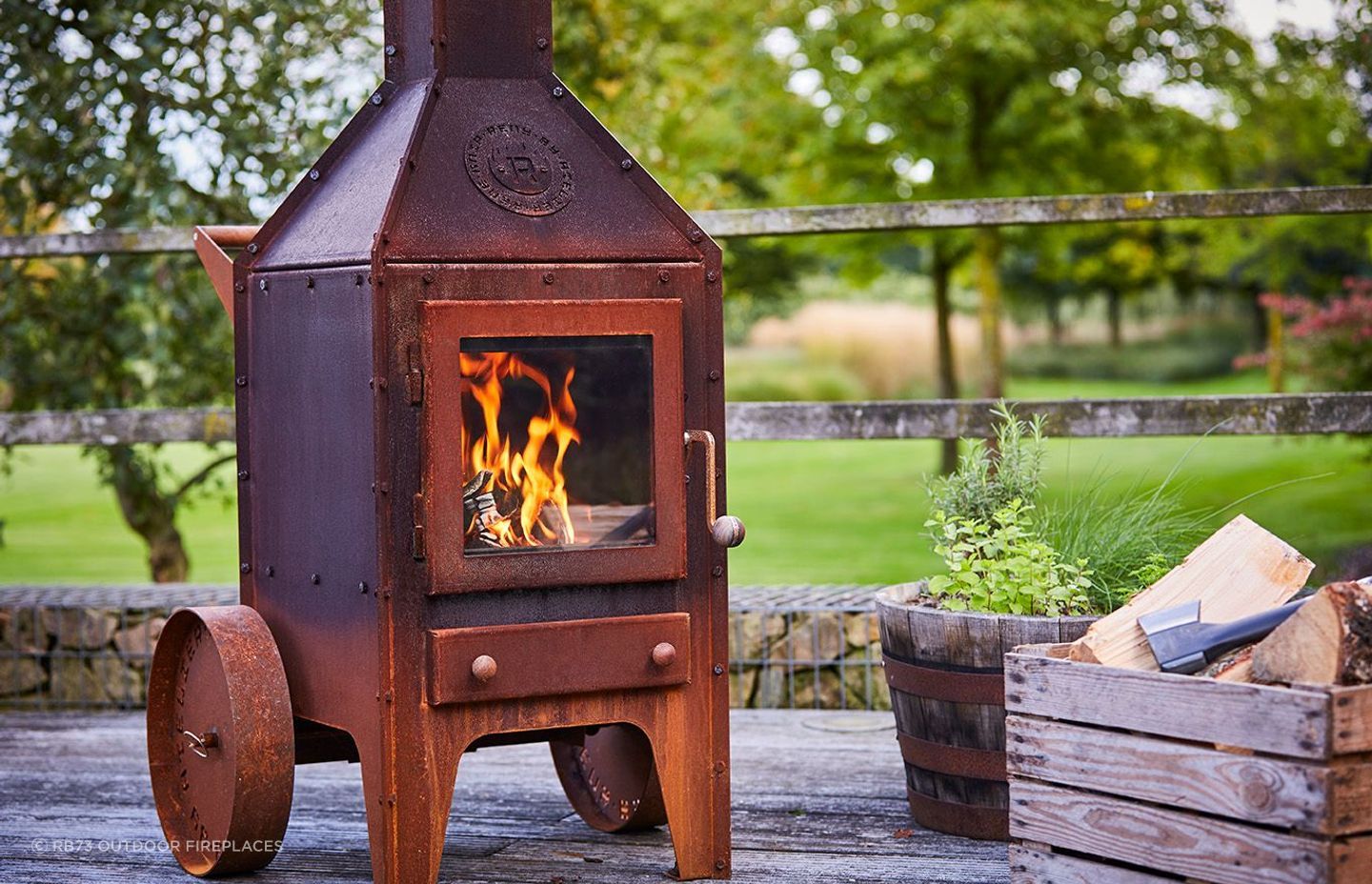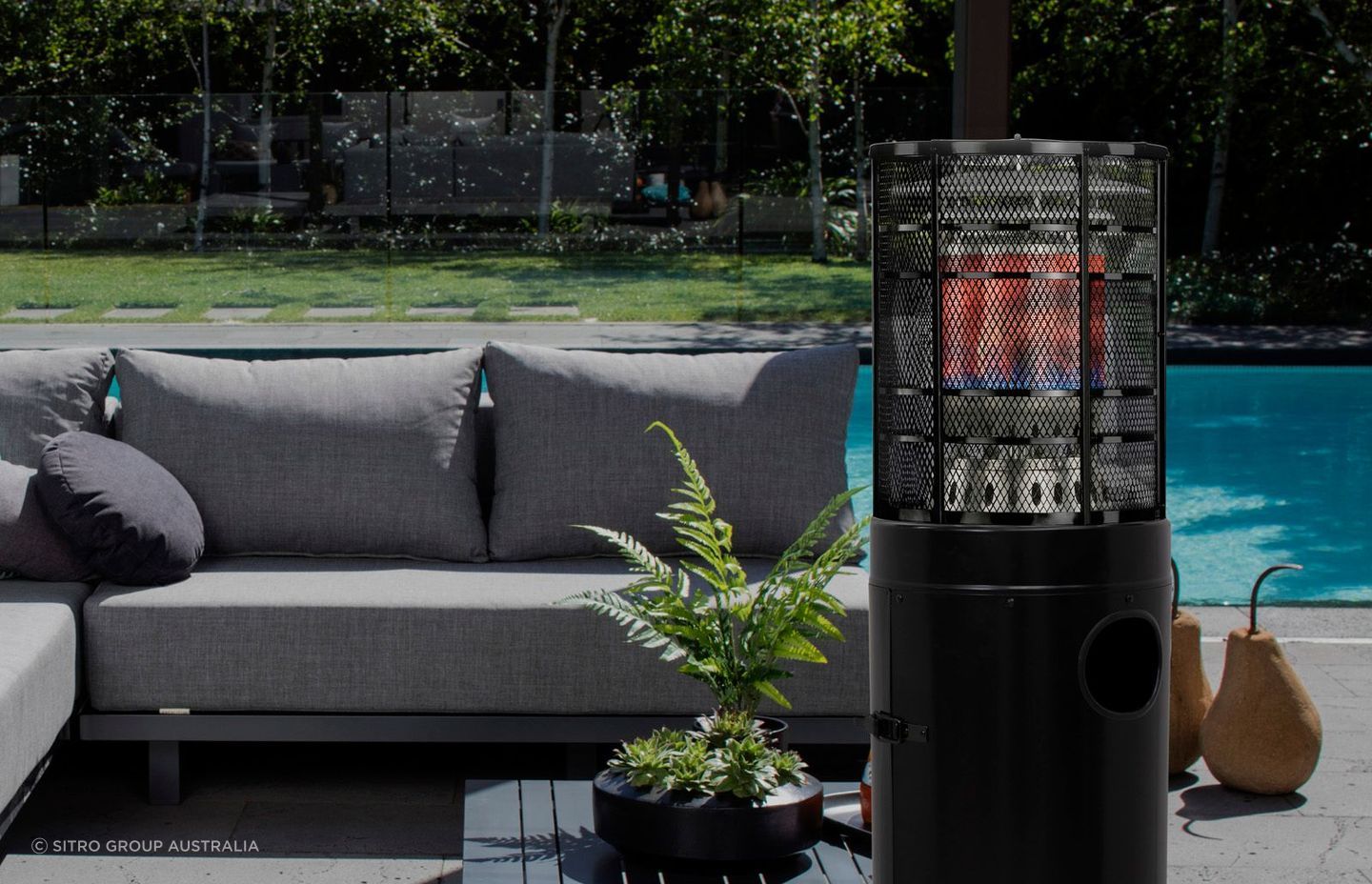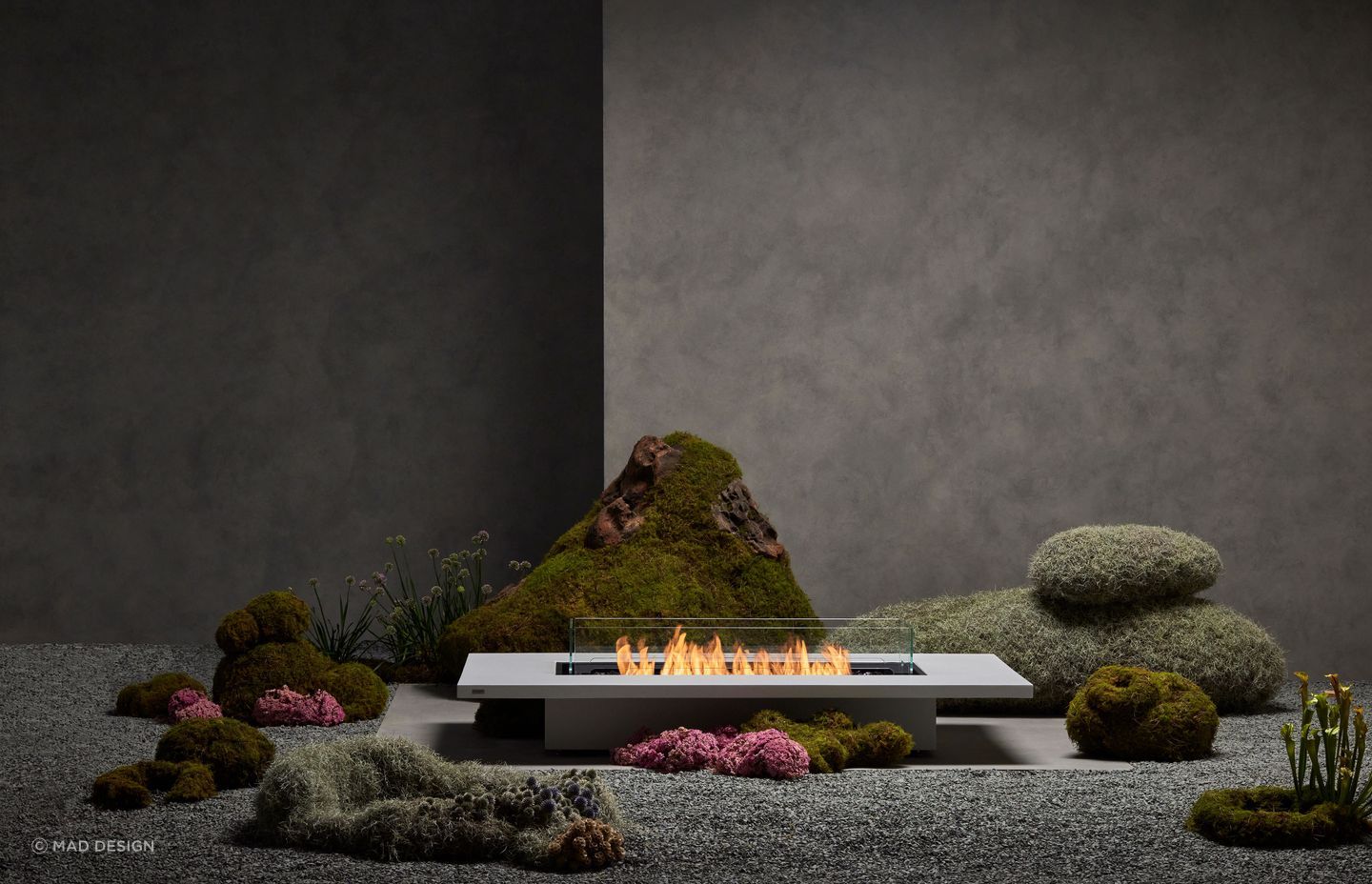Choosing the best outdoor heating for your home

An effective heating solution in the right spot can keep everyone in your outdoor entertainment area comfortable and warm. However, like indoor heating, not every method for keeping outdoor areas warm is energy efficient or costs the same to run. The trick is finding the most appropriate option that fits both your space's heating needs and your budget. Below, we look at the best outdoor heating solutions with cost-effectiveness in mind.
What are the different types of outdoor heating?
Outdoor patio heaters primarily work by outputting radiant heat. Instead of heating the air and moving it around a room like a convection heater, radiant heaters use infrared radiation to heat people and objects directly. Outdoor fireplaces, on the other hand, generate a mix of radiant and convection.
This is the main difference between indoor and outdoor heating systems. Radiant heaters are a much more efficient means to heat the outdoor environment. Convection heating is highly ineffective in open areas because there is no way to trap the heated air. It simply rises away. Outdoor heaters and burners that generate radiant heat run on three main kinds of fuels: wood, gas, and electricity.
1. Wood burning outdoor heating
If you have access to a steady supply and have enough room to store it, wood is one of the most affordable fuels available. There is a wide range of outdoor fireplaces available from budget to premium-priced products. In terms of type, they range from the small and portable to the large and in-built, complete with flue and surroundings.
If a fireplace doesn't suit, a similar alternative is a fire pit. An outdoor fire pit is essentially a large bowl in which you can burn an open fire. They're generally cheaper than fireplaces, as installation costs are usually lower with fewer moving parts to contend with.
Related article: Different types of fireplaces: pros and cons in 2024

2. Gas fueled outdoor heating
Gas heaters provide instant radiant heat that's easy to control. Gas heaters or fires that are connected to mains lines are the cheapest kinds to run, but they can be more expensive to connect and install and aren't as versatile in terms of how they can be moved about. Portable gas patio heaters, on the other hand, run on interchangeable LPG gas bottles. They are at the more expensive end of outdoor heaters to run but offer a bit more flexibility, especially for those who aren’t plumbed with natural gas in their properties.

3. Electricity based outdoor heating
Electrical infrared heaters use radiant heat and are another popular option but generally cost the most to run. That said, electric infrared radiant heaters can be effective for heating specific areas, strategically placed above tables and chairs where gas or open fires aren’t suited. They also often have more customisable features within their heat settings and heating elements that can be operated and adjusted by remote control. This allows you to easily achieve the right amount of heat output required for the given situation or environment.
Related article: Electric vs. gas fireplaces in Australia: points to consider

Consider what sized outdoor heater you need
When choosing an outdoor heater, it’s important to consider the size of the area you want to heat. A heater that’s too small for the space will struggle to provide adequate warmth, while a heater that’s too large could waste energy and increase running costs. To determine the appropriate size, measure the area you intend to heat in square metres and match it with the heater’s output, usually measured in watts or BTUs (British Thermal Units). Additionally, factors such as the height of the space, the type of fuel used, and exposure to wind or cold can also influence the size of the heater you need.
What costs should you consider for outdoor heating?
When choosing an outdoor heater, consider both the purchase price and the running costs. The upfront cost is paid at purchase, while running costs are ongoing, depending on usage. More efficient models may have a higher purchase price but lower operating costs over time. If you use your heater infrequently, a lower-priced option with higher running costs might be best, but if you plan to use it often, investing in a more expensive, energy-efficient model could be more cost-effective in the long run.
How to choose the right outdoor heating system?
Choosing the right outdoor heater involves more than just picking a style—you need to consider factors like space, fuel type, and efficiency to ensure comfort and value.
1. Assess your outdoor space
Measure the area you want to heat and choose a heater with an appropriate output (watts or BTUs). Consider factors like space height, exposure to wind, and the surrounding environment. An outdoor heating professional is best placed to advise specifically on this.
2. Select the right fuel type
Choose between wood, gas, or electric heaters based on availability, cost, and the style that best fits your outdoor space. Wood heaters offer visual appeal, gas heaters provide instant warmth, and electric heaters are ideal for specific, small areas.
3. Consider installation and mobility
Determine if you need a fixed or portable heater. Fixed options may cost more to install, but they’re great for permanent outdoor setups. Portable heaters provide flexibility, especially if you don’t have a gas line connection.
4. Evaluate energy efficiency
Compare energy efficiency ratings for different models. While some heaters may have a higher upfront cost, they can save money in the long term with lower running costs.
5. Check safety features
Ensure the heater has important safety features like a tip-over switch, child locks, and weather protection, especially for gas or electric models.
6. Factor in maintenance and longevity
Consider the upkeep required for each type of heater. Wood heaters might require regular cleaning, while electric heaters generally have lower maintenance needs.
7. Balance cost with usage
If you plan to use the heater frequently, investing in a more expensive but energy-efficient model can be more cost-effective in the long run. If occasional use is expected, a less expensive option may be sufficient.

Find the best outdoor heating solutions for you
As you can see, there are some great outdoor heating options available, all with their own advantages and benefits. Whether it’s a cosy fireplace or fire pit, a versatile portable gas heater, or a strategically placed electric heater, you’ll be able to find the best option for you and your home, keeping all these essential considerations in mind.
This article was updated on 19th of December 2024
Browse a large selection of high-quality outdoor heating systems on ArchiPro
